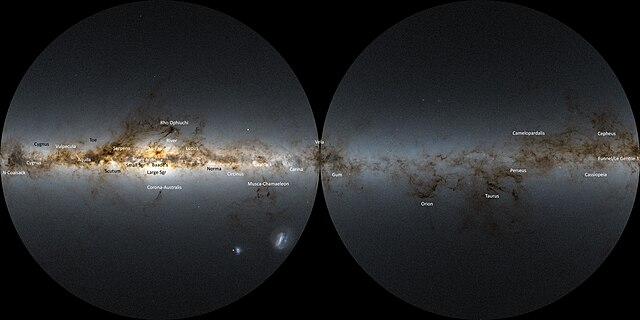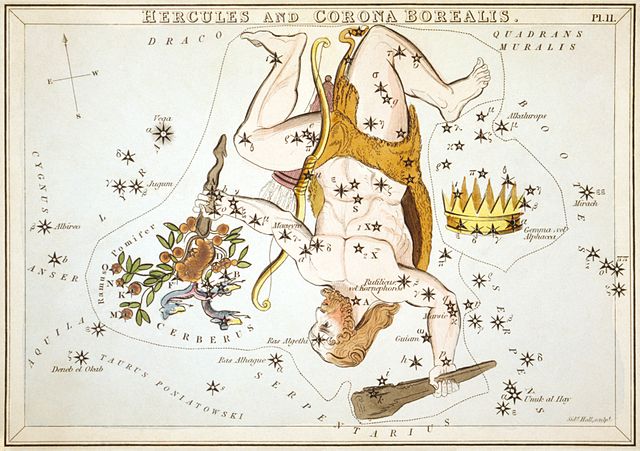Corona Australis is a constellation in the Southern Celestial Hemisphere. Its Latin name means "southern crown", and it is the southern counterpart of Corona Borealis, the northern crown. It is one of the 48 constellations listed by the 2nd-century astronomer Ptolemy, and it remains one of the 88 modern constellations. The Ancient Greeks saw Corona Australis as a wreath rather than a crown and associated it with Sagittarius or Centaurus. Other cultures have likened the pattern to a turtle, ostrich nest, a tent, or even a hut belonging to a rock hyrax.
The constellation Corona Australis as it can be seen by the naked eye
The Milky Way as seen by Gaia, with prominent dark features labeled in white, as well as prominent star clouds labeled in black. Corona Australis is on the left bottom center.
The R Coronae Australis region. The dust of the cloud is illuminated blue by starlight. Stars that are forming inside the cloud could only be detected by observing at longer wavelengths.
Detail of the star-forming region and Coronet Cluster, with the distinct Herbig–Haro object HH 100/Bernes 158 to the left.
Corona Borealis is a small constellation in the Northern Celestial Hemisphere. It is one of the 48 constellations listed by the 2nd-century astronomer Ptolemy, and remains one of the 88 modern constellations. Its brightest stars form a semicircular arc. Its Latin name, inspired by its shape, means "northern crown". In classical mythology Corona Borealis generally represented the crown given by the god Dionysus to the Cretan princess Ariadne and set by her in the heavens. Other cultures likened the pattern to a circle of elders, an eagle's nest, a bear's den or a smokehole. Ptolemy also listed a southern counterpart, Corona Australis, with a similar pattern.
The constellation Corona Borealis as it can be seen by the naked eye
X-ray image of galaxy cluster Abell 2142
Hercules and Corona Borealis, as depicted in Urania's Mirror (c. 1825)







